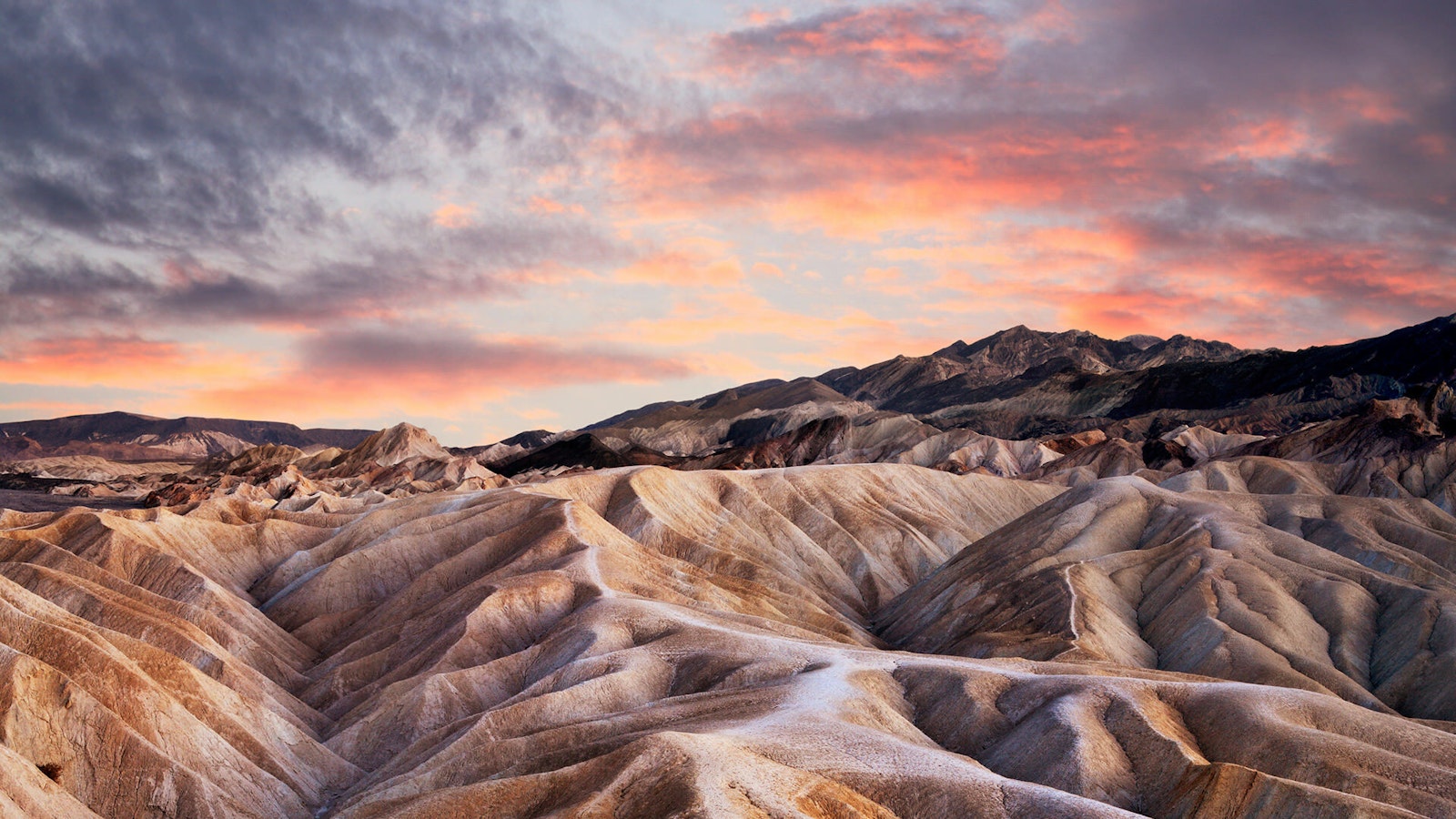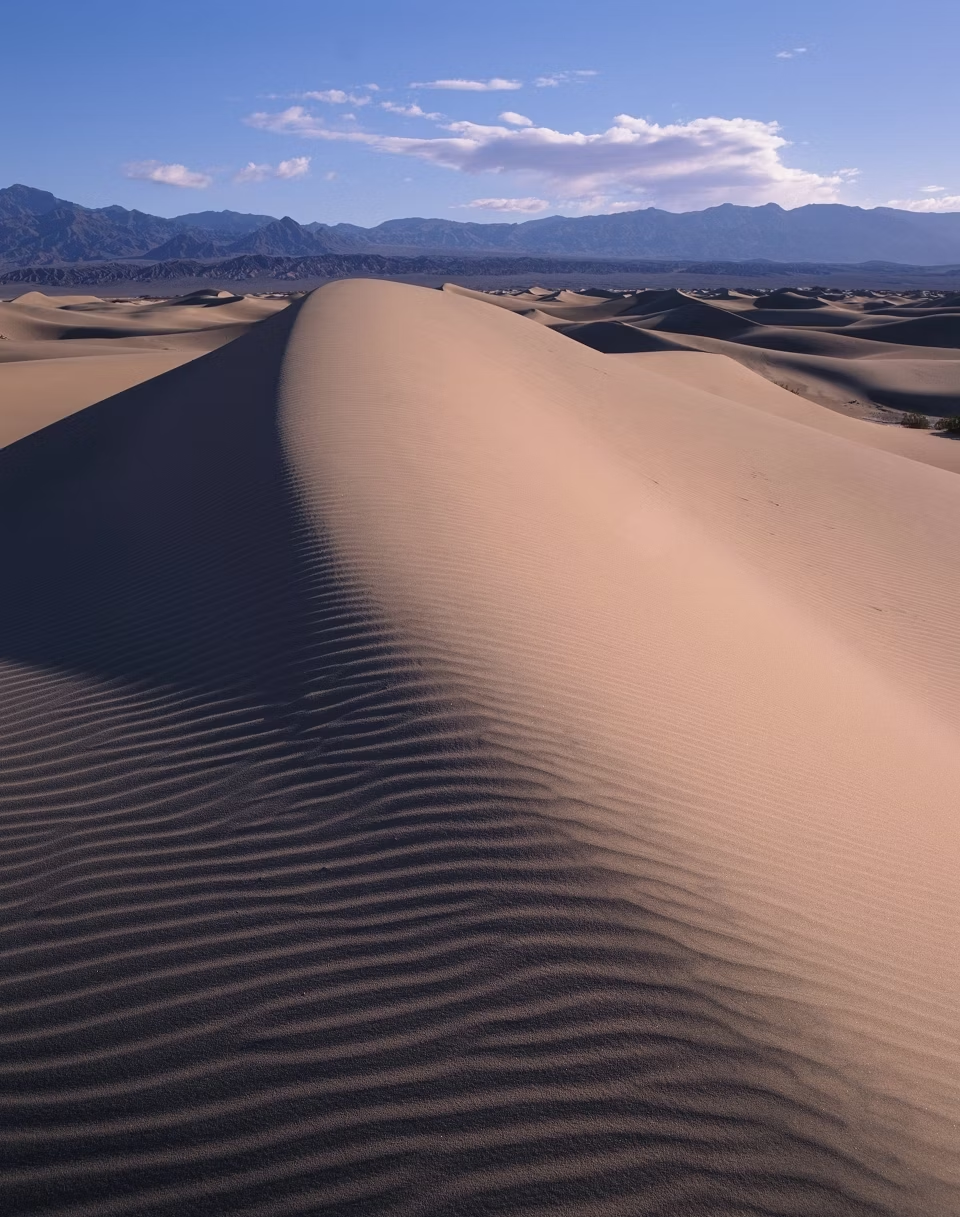
Death Valley National Park

I have always loved the desert. You sit down on a sand dune. You see nothing. You hear nothing. And yet something shines, something sings in that silence…
From the magical burst of wildflower blooms in spring to the allure of ghost towns, historic mining operations, wildlife, and raw natural beauty, Death Valley National Park offers something for everyone.
Named a national monument in February of 1933, Death Valley National Park owes much of its early development to the Civilian Conservation Corps, or the CCC. From 1933 until 1942, twelve CCC companies improved the area by creating trails, buildings, and camps. They also introduced phone and water service to some areas of the valley. Much of what they built is still in existence and utilized in Death Valley National Park today.
Not only rich in beauty and pioneer history, Death Valley was known as a prosperous mining mecca for many decades. The valley was mined extensively for gold, silver, copper, tungsten, lead, zinc, antimony, and borax. The last mining operation, the Billie Mine, located along the Dante's View road, ceased operations in 2005.
Park Updates
-
Update$4.4 Million to Fund 99 Open OutDoors for Kids Projects for 2023 – 2024 School Year, Hitting Program Milestone
-
UpdateWomen’s History Fellow Crafts Collaborative Digital Exhibit